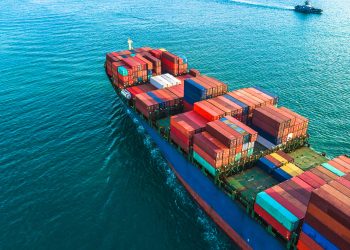The haste to catch up with container equipment demand after the shortfall of 2016 has slowed down, and 2018 seems to be a promising year of record production, Drewry reported.
For the past 18 months leasing companies and transport owners were challenged by the improvement in container demand last year. So, serious investment was needed if a container shortage was to be prevented. This is now wearing off and 2018 can be a record year for container production.
[smlsubform prepend=”GET THE SAFETY4SEA IN YOUR INBOX!” showname=false emailtxt=”” emailholder=”Enter your email address” showsubmit=true submittxt=”Submit” jsthanks=false thankyou=”Thank you for subscribing to our mailing list”]
Drewry believes that there was enough capacity in the box-building industry to prevent any shortages in supply. Indeed, dry van prices have decreased despite the increase in demand. The main losers in this phase of the building cycle seem to have been the manufacturers, as they had to cut their prices and experienced a decline in profitability.
In addition, container equipment supply growth has been more than demand so far, something that relieves the pressure. However, it is not sufficient to make up for the investment shortfalls of the past.
Moreover, the key yardstick is the operating ratio which measures the maritime container equipment fleet in comparison to total shipping slot capacity. Last decade this ratio stood at a factor of 2.0 but has since declined to 1.90. When investment dried up in 2016 the ratio went down to just 1.88. Since then it has recovered, but is projected to fall under the critical equilibrium threshold of 1.90 by the end of this year.
Leasing companies are still the main buyers of containers, so Drewry says that its is surprising that the increase in supply has caused a drop-off in lease rates.
Finally, reefer building is still strong, despite suggestions that other specials such as tanks would take over the market for high-value units.






























































